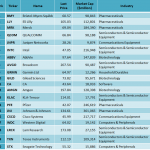In today’s day and age of high speed computers, lightning fast financial information and data overload, diving into the world of trading and self-directed investing can be a frightening challenge for a newcomer to say the least. Add on top of that deciding which strategy to use and it’s no wonder why so many traders fail.
You can choose the path of fundamental analysis where you will focus on economic and financial reports to make decisions. You can focus on conventional technical analysis which is loaded with price patterns, indicators, oscillators and more. Maybe you want to combine the two like some people and spend 23 hours a day crunching data and looking at charts, leaving about 1 hour for eating and sleeping. An alternative approach may be something you are already very good at, properly buying and selling anything. Let’s take a look at this approach to help figure out what makes sense.
I was leading a live online trading session last week and took a picture of a trade I setup. It was a shorting opportunity for a trade in the S&P.
Sam Seiden Live Trading Session – 3/22/18: S&P

The trade was to sell the S&P short at 2738 with a protective buy stop at 2747 and a very large profit zone below. The supply level we were planning on shorting at is shaded in yellow. I assume there is more supply than demand at that price level because price could not stay at that level, therefore it declined. I know that this can only happen because supply exceeds demand at that level. Another word for supply is retail. So, if I am a smart buyer and seller of anything, I know that when prices are at retail levels, I want to sell to someone who desires to buy at retail levels. Isn’t that how businesses make money?
Next, when the Federal Reserve announced their rate hike decision, our trade met entry as price rallied back up to that supply level (retail price) for a short entry. What that meant was that someone was convinced that the S&P was worth buying at our retail price which meant we wanted to sell. Over that day and the next, price declined over 100 S&P points. Our simple rule-based strategy has us buying at price levels where demand exceeds supply (wholesale prices) and selling at price levels where supply exceeds demand (retail prices). This may sound too simple and boring but that’s the way I choose to do it; it’s how you make money buying and selling anything in life. Let’s take a look at some alternative ways of trading, and in doing this let’s look at the same trade through the eyes of conventional technical analysis with indicators and oscillators and such.













Leave A Comment